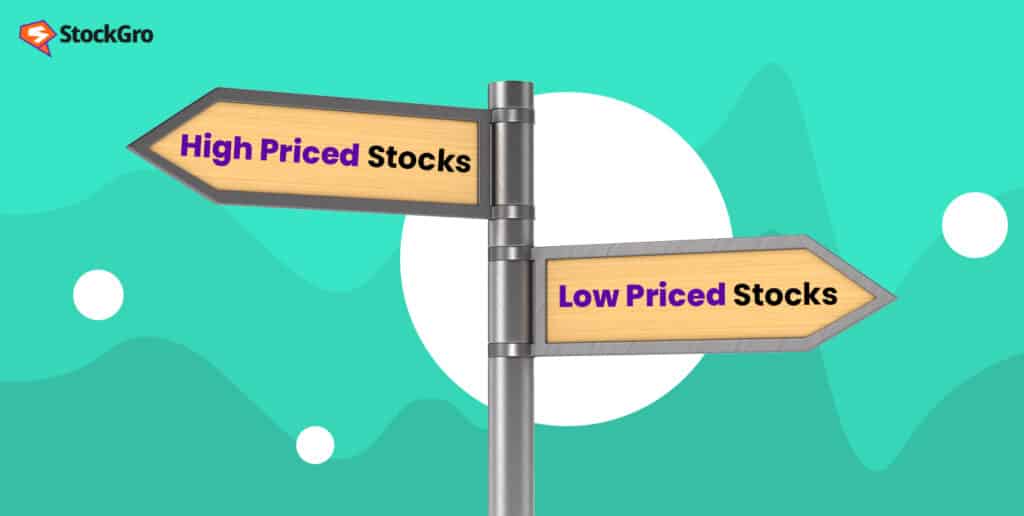
In the vast universe of the stock market, newcomers often hear terms like “low price share” and “high price share.” However, what do these terms really mean? Moreover, how do these stock prices affect your investment strategy? If these questions have been lingering in your mind, you’ve come to the right place. Let’s dive into the basics of low and high priced stocks and their impact on your investment decisions.
Understanding stock prices
1. What is a low price share?
A low price share often refers to stocks that are priced at a relatively lower value compared to others in the market. These are also sometimes referred to as “low cost stocks” or “low value stocks.” They are typically considered affordable, making them attractive to beginners or those with a limited investment budget.
2. The high price share realm
On the other hand, high priced stocks, or “high value stocks,” come with a heftier price tag. These stocks usually belong to well-established companies that have a proven track record of performance and profitability.
Low price share vs high price share
Now that we’ve understood what these terms mean, let’s explore the pros and cons of investing in each.
Pros of low price shares
- Affordability: One of the primary advantages of low price shares is that they are affordable. This allows beginners to buy a considerable number of shares even with a smaller budget.
- Potential for high returns: Often, low cost stocks have the potential for significant growth. These are usually from emerging companies that can grow exponentially, resulting in a “low investment high profit shares” scenario.
Cons of low price shares
- Risk: Since these shares are typically from newer or smaller companies, there’s a higher risk involved. The company might not succeed, leading to potential losses.
- Volatility: Low-price shares can be more volatile compared to their high priced counterparts. This means their prices can fluctuate more frequently.
Pros of high-price shares
- Stability: High-value stocks are usually from established companies, which means they tend to be more stable and less volatile.
- Regular dividends: These companies often pay out dividends, providing a consistent income stream to shareholders.
Cons of high-price shares
- High initial investment: Buying high-value stocks requires a significant amount of money, which might not be feasible for everyone.
- Slower growth: While these stocks are stable, they may not offer the exponential growth potential that some low-cost stocks can.
You may also like: What is LTP in share market & how it is calculated?
Choosing the right investment for you
The choice between investing in low or high-priced stocks largely depends on your financial goals, risk tolerance, and investment horizon. Here’s a simple table to guide your decision:
| Criteria | Low price share | High price share |
| Investment Amount | Low | High |
| Risk Level | High | Moderate to Low |
| Growth Potential | High | Moderate |
| Stability | Less Stable | Stable |
| Suitable For | Risk-takers, Beginners | Conservative Investors |
The art of diversification
A smart strategy that many seasoned investors adopt is diversification. This means spreading your investments across a variety of assets, including both low and high priced stocks. By doing this, you’re not placing all your eggs in one basket.
Also read: Your guide to real estate investment trusts
Why diversify?
- Risk management: If one stock or sector underperforms, the others in your portfolio can offset that performance. By diversifying, you reduce the potential damage one poorly performing stock can have on your entire portfolio.
- Potential for better returns: With a mix of both low and high priced stocks, you expose yourself to both the explosive growth potential of emerging companies and the stability of established ones.
- Access to more opportunities: Diversifying allows you to tap into different sectors, industries, and company sizes. This means you can capitalize on a broader range of investment opportunities.
Also read: Your comprehensive guide to successful share market investing
Tips for achieving a balanced portfolio
- Research is key: Before diving into any stock, whether it’s a low cost stock or a high value one, always do your due diligence. Understand the company’s fundamentals, the industry it operates in, and its future prospects.
- Review regularly: The stock market is dynamic, and situations change. Make it a habit to review your portfolio periodically to ensure it aligns with your financial goals.
- Stay updated: Keep yourself updated with market news. Factors like geopolitical events, economic data releases, and industry trends can impact stock prices. Being informed allows you to make timely decisions.
- Seek expert advice: If you’re unsure about your decisions or need a second opinion, don’t hesitate to consult with a financial advisor. They can provide valuable insights and recommend strategies tailored to your needs.
Low price share and high price share in the bigger picture
While the debate between low price share vs high price share will always be a hot topic among investors, it’s crucial to remember that the stock market is just one piece of the broader investment puzzle. There are other assets like bonds, real estate, and commodities that can also play a significant role in shaping your financial future.
To be a successful investor, you don’t necessarily have to pick a side between low and high priced stocks. Instead, consider how each fits into your larger financial strategy. Remember, it’s not about finding the perfect stock; it’s about creating the perfect portfolio for you.
In conclusion
The journey into the stock market is an exciting one, filled with opportunities and challenges. Whether you’re drawn to the allure of low investment high profit shares or the stability of high return shares, always remember the golden rule of investing: it’s not about timing the market, but time in the market.
So, equip yourself with knowledge, stay patient, and keep your financial goals at the forefront. With the right approach, every beginner can navigate the stock market maze with confidence and success.

